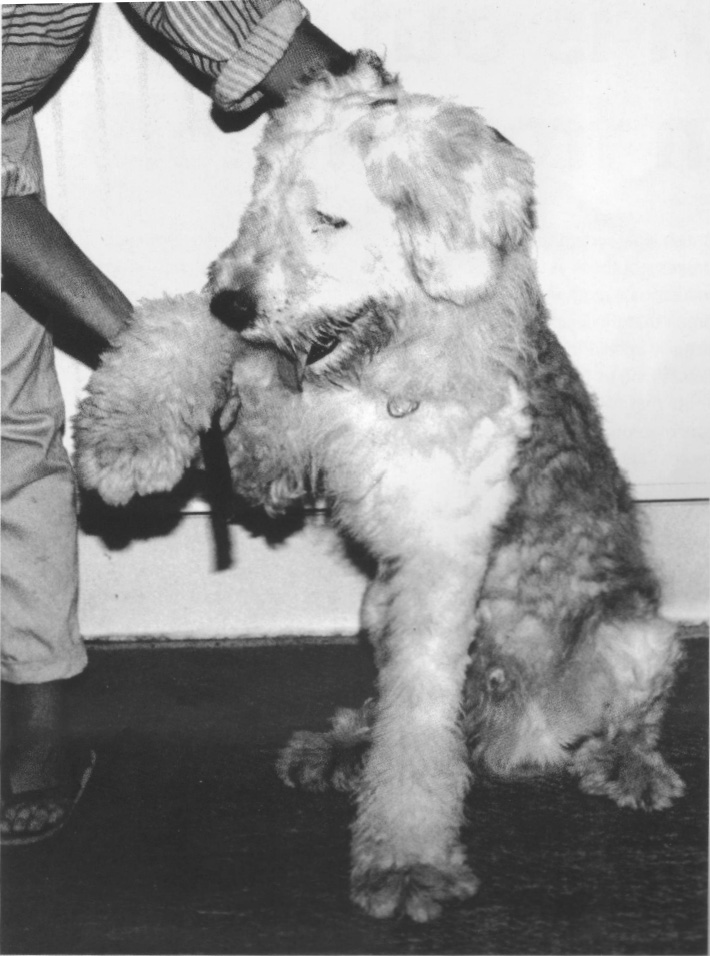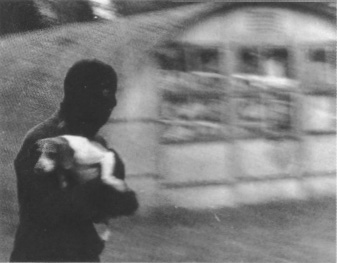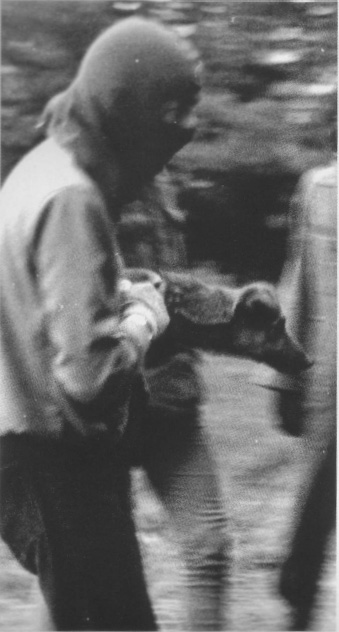The truth is out there -- A lesson from History
Part b
 One of CALL's targets was University Park Farm (UPF), an animal holding and breeding centre owned by the University. On 7th July 1985, 30 CALL activists arrived at the UPF perimeter fence and in broad daylight entered the farm. Taking photographic and video evidence, they filmed row upon row of dog runs, some holding beagles but most holding cross-breeds - old English sheepdogs, greyhounds, labradors, canes, ana even a rottweiller. No two dogs were alike, and were clearly not purpose-bred. Many of the dogs offered their paws when the activists extended a hand to them, proving that these were almost certainly ex-pets. (Some of the dogs held at Park Farm were later liberated, and those to whom they were dispersed had no doubt that they had all once been much-loved pets. It might be worth adding here that among the dogs rescued was also a non purpose-bred ex-hunting beagle...)
One of CALL's targets was University Park Farm (UPF), an animal holding and breeding centre owned by the University. On 7th July 1985, 30 CALL activists arrived at the UPF perimeter fence and in broad daylight entered the farm. Taking photographic and video evidence, they filmed row upon row of dog runs, some holding beagles but most holding cross-breeds - old English sheepdogs, greyhounds, labradors, canes, ana even a rottweiller. No two dogs were alike, and were clearly not purpose-bred. Many of the dogs offered their paws when the activists extended a hand to them, proving that these were almost certainly ex-pets. (Some of the dogs held at Park Farm were later liberated, and those to whom they were dispersed had no doubt that they had all once been much-loved pets. It might be worth adding here that among the dogs rescued was also a non purpose-bred ex-hunting beagle...)
 The evidence incontrovertibly showed that Oxford University was experimenting on dogs that in many cases had probably been stolen from loving homes. How was it possible that this most august of institutions could be party to such an unscrupulous operation? We know now that this was merely another aspect of a continuing tradition in the University's shadier side, yet to the public at the time, it seemed hardly credible that this was happening. Positive media coverage was massive, and the general support was huge.
The evidence incontrovertibly showed that Oxford University was experimenting on dogs that in many cases had probably been stolen from loving homes. How was it possible that this most august of institutions could be party to such an unscrupulous operation? We know now that this was merely another aspect of a continuing tradition in the University's shadier side, yet to the public at the time, it seemed hardly credible that this was happening. Positive media coverage was massive, and the general support was huge.
 Later that year, CALL entered other establishments owned by Oxford University in an attempt to highlight breaches in the law. On September 16th 1985, Oxford University's cat colony at Nuneham Courtenay was inspected. This holding unit bred cats so that key vivisectors at Oxford, like Colin Blakemore, now Director of the Medical Research Council, could sew up the eyes of kittens. 20 years later Oxford University is still duplicating these experiments despite the fact that most experts agree nothing useful has been garnered from this cruel and pointless exercise. However, what it did do was elevate Colin Blakemore to his present position and to something of a celebrity status with the media, so it has obviously been beneficial to him, if not for anyone else.
On 8th July 1986, a year after the raid on Park Farm, CALL undertook probably its most ambitious raid, targeting Oxford University laboratories at the John Radcliffe Hospital. Documents taken during the raid on Park Farm had revealed that day-old monkeys were
Later that year, CALL entered other establishments owned by Oxford University in an attempt to highlight breaches in the law. On September 16th 1985, Oxford University's cat colony at Nuneham Courtenay was inspected. This holding unit bred cats so that key vivisectors at Oxford, like Colin Blakemore, now Director of the Medical Research Council, could sew up the eyes of kittens. 20 years later Oxford University is still duplicating these experiments despite the fact that most experts agree nothing useful has been garnered from this cruel and pointless exercise. However, what it did do was elevate Colin Blakemore to his present position and to something of a celebrity status with the media, so it has obviously been beneficial to him, if not for anyone else.
On 8th July 1986, a year after the raid on Park Farm, CALL undertook probably its most ambitious raid, targeting Oxford University laboratories at the John Radcliffe Hospital. Documents taken during the raid on Park Farm had revealed that day-old monkeys were